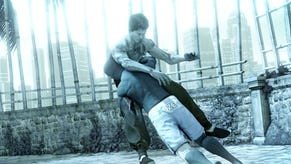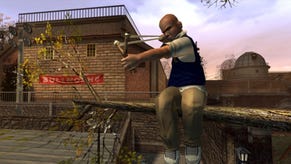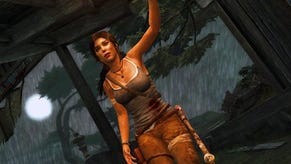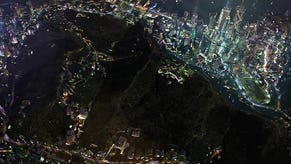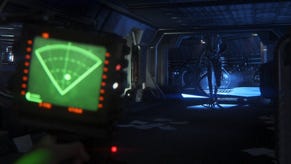Why Sleeping Dogs is the most interesting open-city game of recent years
Where there's a Will there's a Wei.
With Yakuza back in the spotlight again and Shenmue reappearing after 20 years in the wilderness, I've been thinking a lot about Sleeping Dogs, United Front's open-world crime epic that is often considered a cousin to Yakuza. Yet while Shenmue and Yakuza are quintessentially Japanese games, while Sleeping Dogs is a Canadian production set in Hong Kong. If these games were restaurants and I wandered into Sleeping Dogs expecting to dine on tuna sashimi, I would rightfully be scorned.
Nonetheless, I've been looking for an excuse to write about Sleeping Dogs for ages, and as I wandered around Yakuza 0's Kamurocho district for the first time earlier this year, the aesthetic similarities were enough for me to latch onto like a dog that has just been aroused from slumber by having its tail stood on.
This is because Sleeping Dogs is by some margin my favourite open-city game; one that takes the familiar Grand Theft Auto template, adds some fantastic embellishments that more developers should imitate, and places it in one of the most visually distinctive and interesting virtual cities ever designed. I don't think this latter point is appreciated enough. Making an open world of any kind feel distinct is a huge challenge in and of itself. It's like cooking a meal to serve a large number of people. You need to add a large number of ingredients to ensure everyone is sufficiently fed, but if you just throw everything into the pot all you'll end up with is a bland mulch. This is especially easy to do with GTA-style games, because modern cities are often so similarly structured. There's always a commercial hub. There's always a dockyards.
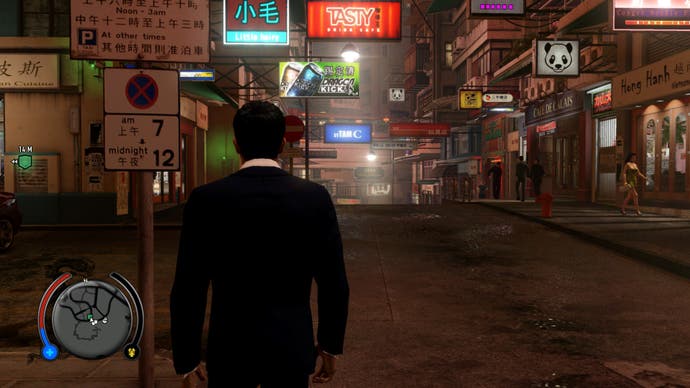
Sleeping Dogs has all of these too. Indeed, what makes Sleeping Dogs stand out isn't so much its choice of setting, but United Front's dedication to making its Hong Kong feel as authentic as possible. Sleeping Dogs' city is drawn from over 25,000 photos United Front took as they spent a week exploring the city. The result is a stunning recreation of Hong Kong's unique cultural mesh, where Chinese shop signs sit alongside British road-signs. Hong Kong is the fourth most densely populated area on Earth, and Sleeping Dogs reflects this density on screen. You can feel the urban crush as tower blocks and sky-scrapers loom over you everywhere you go, while the dozens of shop signs protruding over the roads act almost like an ad-hoc rooftop in some areas.
Particularly impressive areas include the bustling Temple Street Night Market, the Soho nightclub district, and the floating village of Aberdeen Harbour, with its crisscrossing boardwalks connecting the harbour's many houseboats. My favourite locations, however, are the little back-alleys that cut through North Point. Lined with rubbish bins and air-conditioning units, there's nothing visually striking about them, but they're vital in lending the game a sense of secrecy,
When it first launched in 2012, Sleeping Dogs was criticised for looking dated. The developers remastered the game two years later, in a superb update that means it still looks fantastic today. The game looks its best at night in the rain, as the game's gorgeous water reflections bounce the fluorescent light from all those neon signs right across your screen. But the authenticity is visible in the smoggy sunlight of daytime too, or when you pull over on the side of Hong Kong's twisting highways to watch the dusk turn the ocean red.
Sleeping Dogs was also criticised for being structurally unambitious. It's true that it mimics the GTA format fairly heavily, blending a two-pronged story that charts Wei Shen's double-life as an undercover police offers, with a multifaceted array of side-activities that include races, drug-busts, and "cop jobs". But I prefer United Front's crime caper to that of Rockstar's. Both possess a similar written quality and recruit Hollywood actors to provide the voicework (in Sleeping Dogs' case this includes James Hong, Lucy Liu, and Altered Carbon's Will Yun Lee as Wei).
Yet where GTA is scathingly satirical in a way that often comes off as misanthropic, Sleeping Dogs is keen to humanise its characters, Winston, the aggressive, musclebound Lieutenant of the Sun On Yee, initially comes off as both a hothead and a meathead. Yet when Wei escorts Winston to a potentially fatal encounter with Winston's boss Uncle Po, we're given a glimpse of Winston's underlying vulnerabilities, as he discusses the importance of family, and asks Wei to take care of his should the worst happen.
At the time of launch, it took flak for being derivative, but like so much else in Sleeping Dogs, its roots are embedded in reality. The two main triad factions in the game, the Sun On Yee and the 18k, are slight variations on the real Sun Yee On and the 14k gangs. Meanwhile, the game's primary plot arc, in which three Sun On Yee underbosses battle for control of the gang after the previous boss is brutally murdered, is all based off real events that happened just a few years before the game came out. That story also ended with an undercover police sting, resulting in the arrest of 222 people.
These little touches are what, for me, make Sleeping Dogs so interesting, over and above the broader strokes. It's a theme that runs through the game's mechanics too. Sleeping Dogs' systems are also derived largely from other games. The melee combat blends Arkham-Aslyum counters with Yazuza-esque environmental finishers, while the game's parkour-esque chases borrow from Mirror's Edge, and the cover system could be from any third-person game of the last ten years.
But Sleeping Dogs isn't content to let these systems lie, making small but significant changes that help make these systems more nuanced and fluid. While the combat uses both counters and environmental attacks, these are bound together by a new grappling ability that lets Wei grab enemies by the shirt and drag them around, slamming them into walls, throwing them at other enemies, or finishing them off with a car-door or a desktop.

Meanwhile, to the driving system it adds a shunt ability that lets you batter other cars off the road, and an "action-hijack" power that lets Wei leap from one car to another while in motion. To the cover-shooting, which is deployed far less frequently than in other games, it combines a cover-vault with bullet-time to encourage players into doing cool stunts. My favourite little feature is how the game lets to throw enemies into the boot of your car, but not until Wei has bashed their heads off the bodywork in his typically ferocious style.
This isn't to say the game is free of problems, most of which come down to refinement. The driving model is arcade bordering on hollow, the melee combat isn't quite as slick as Rocksteady's defining effort, and the gunplay is undoubtedly the weakest element of the game. I also wish it did more with its undercover cop premise. It's arguably the perfect occupation for an open-world protagonist, affording the player a both a position of authority and justification for acting like a criminal.
Yet Sleeping Dogs is largely content to keep Wei the policeman and Wei the gangster as separate entities, while the tension of being an undercover agent is restricted to the plot. You never have to work to maintain your cover, or deal with a gangster who realises your true identity. Such a system would elevate Sleeping Dogs from being a great interpretation of the GTA format, into a game that stands as something truly unique. When considered as a whole, Sleeping Dogs demonstrates the best of what the genre can do short of something revolutionary. The best open-city game of recent years? Perhaps not, but it's certainly one of the most interesting.



